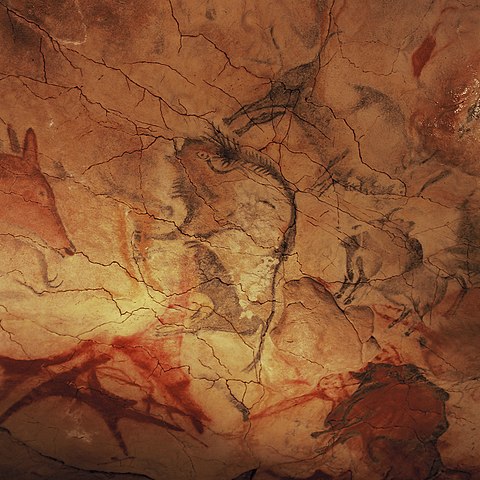Neanderthals may have been the first artists of Europe, and of humankind, a group of scientists claim.
The first known artwork in the world dates back tens of thousands of years ago, when “modern humans,” or Homo sapiens, painted images on the walls of caves and made holes in shells. Except now, some of these cave art may not have been made by Homo sapiens, but by Neanderthals, according to scientists in the United Kingdom.
The painted caves were unearthed in Spain, consisting of clear images drawn with red ochre paint, which is soil mixed with water. One of the designs is geometric and appears to be part of a ladder, while others are stencils of handprints, swirls of bright red dots or patches the extend to stalactites hanging from the cave ceilings, NPR reports.
For the longest time, the work was attributed to human who originally came from Africa and arrived in Spain around 45,000 years ago.
But new tests on the rock and calcium carbonate that formed over parts of the ochre paint show that the images date back to 65,000 years ago – 20,000 years earlier than when modern humans got to the area.
Alistair Pike, an archaeologist from the University of Southampton in England who was part of the team that did the new research, said,
The only species that were around at that time were Neanderthals. So, therefore, the paintings must’ve been made by them.
According to Pike, the original technique used to determine the age of the paintings decades ago were not very reliable. This method measured the volume of carbon in the rock, which is prone to errors. So the scientists used radioisotopes of uranium and thorium to conduct their tests, with results showing that the paintings were much older than previously thought.
This means that it was only modern humans who made art.
Pike said, “We’re over the moon. This has taken us 10 years to get to this point.”
Neanderthals are believed to share the same ancestors as humans, and are the closest physical relative to Homo sapiens. But Neanderthals were thought to have been a brutish, rather dumb subspecies. This is in contrast to the concept of art, which requires abstract, symbolic thinking.
Dirk Hoffmann, a physicist with the Max Planck Institute for Evolutionary Anthropology and an expert on dating the Spain paintings, said, “We have examples of pigment use and cave paintings way outside of Europe [in Africa], and we have them in Europe, clearly demonstrated to be of Neanderthal origin.” This new analysis shows that art progressed individually in both regions.
The study was published in Science and Science Advances.
























